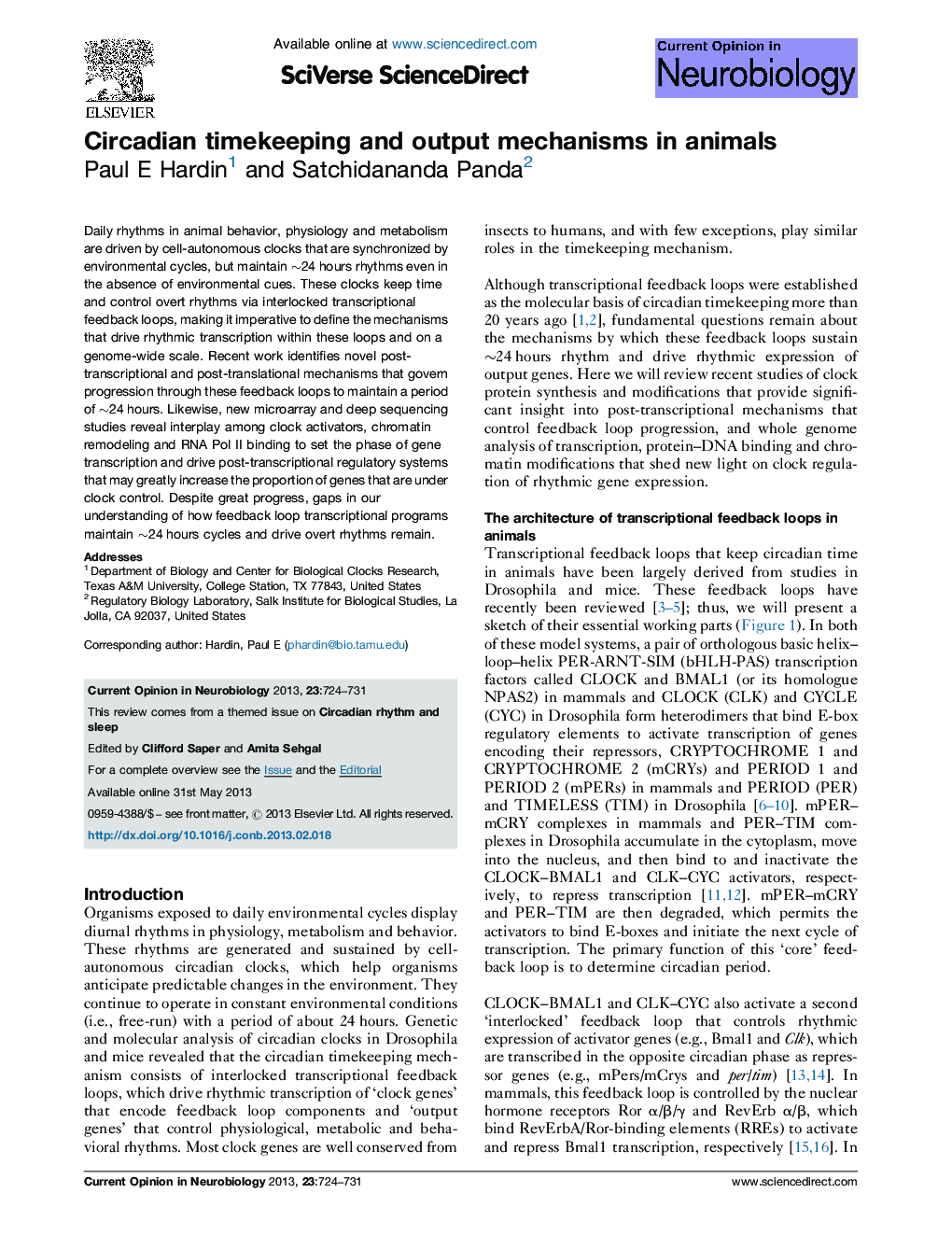| کد مقاله | کد نشریه | سال انتشار | مقاله انگلیسی | نسخه تمام متن |
|---|---|---|---|---|
| 6266588 | 1294915 | 2013 | 8 صفحه PDF | دانلود رایگان |
- Work on circadian period determination and output gene regulation are reviewed.
- Clock protein glycosylation, ubiquitylation and translation influence 24Â hours periodicity.
- Whole genome approaches reveal novel features of clock-controlled transcription.
- Rhythms in post-transcriptional regulators imply more pervasive circadian expression.
Daily rhythms in animal behavior, physiology and metabolism are driven by cell-autonomous clocks that are synchronized by environmental cycles, but maintain â¼24Â hours rhythms even in the absence of environmental cues. These clocks keep time and control overt rhythms via interlocked transcriptional feedback loops, making it imperative to define the mechanisms that drive rhythmic transcription within these loops and on a genome-wide scale. Recent work identifies novel post-transcriptional and post-translational mechanisms that govern progression through these feedback loops to maintain a period of â¼24Â hours. Likewise, new microarray and deep sequencing studies reveal interplay among clock activators, chromatin remodeling and RNA Pol II binding to set the phase of gene transcription and drive post-transcriptional regulatory systems that may greatly increase the proportion of genes that are under clock control. Despite great progress, gaps in our understanding of how feedback loop transcriptional programs maintain â¼24Â hours cycles and drive overt rhythms remain.
Journal: Current Opinion in Neurobiology - Volume 23, Issue 5, October 2013, Pages 724-731
